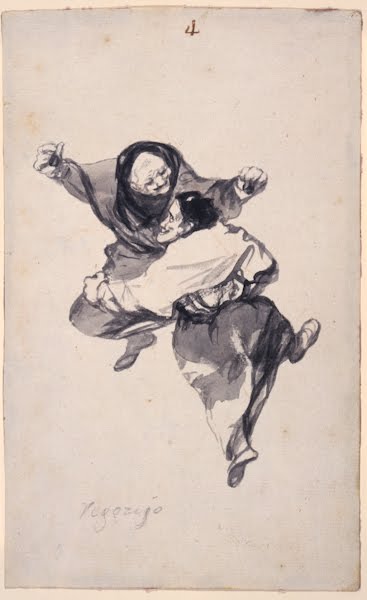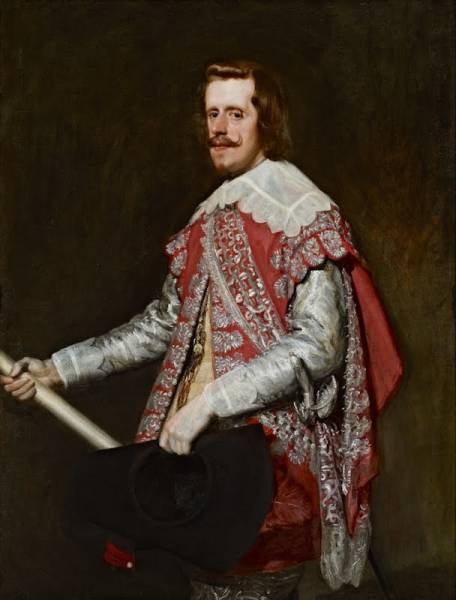
Francisco de Goya y Lucientes, “Regozijo (Mirth), (Album D. 4),” brush and ink and wash and chalk, ca. 1816-20 (courtesy of the Hispanic Society of America, New York)
The Frick Collection
1 East 70th St. at Fifth Ave.
Thursday, December 16, free, 10:00 am – 6:00 pm
Also: Tuesday – Sunday, $18 (free Sundays 11:00 am – 1:00 pm)
212-288-0700
www.frick.org
In 1913, wealthy industrialist Henry Clay Frick hired Carrère and Hastings to build him a five-million-dollar mansion on Fifth Ave. as a place to live as well as a public repository for his magnificent art collection after his death. Frick died in 1919, and his wife passed away in 1931, sending in motion plans to open the mansion and its art holdings to the public. In December 1935, the trustees opened the Frick Collection, where it quickly became recognized as one of the great collections and art spaces in the world. The Frick is celebrating its seventy-fifth anniversary this week with a free day on Thursday, December 16, inviting everyone to marvel in its humble glory without having to pay an admission charge. Currently on view in the downstairs galleries is “The Spanish Manner: From Ribera to Goya” (through January 9), a splendid exhibition of thirty-two seventeenth- and eighteenth-century drawings and twenty-three drawings by Goya that display the imaginative skill of Spanish draftsmen. The first room contains such impressive sheets as Jusepe de Ribera’s red chalk “Studies of a Head in Profile,” which has a fantastical quality, as well as his less detailed, somewhat more abstract “Crucifixion of Saint Peter”; Antonio del Castillo y Saavedra’s emotional pen and ink “Four Heads of Man”; and Bartolomé Esteban Murillo’s delicate “Saint Felix of Cantalice Holding the Christ Child.” The second room is dedicated solely to Spanish master Francisco de Goya y Lucientes, who displays a wicked sense of humor and an exquisite use of brush, ink, wash, and chalk in such powerful works as “Tuti li mundi (Peepshow),” “Repentance,” and “Three Men Digging,” thought to be a sketch for the Frick’s painting “The Forge,” on view upstairs. In several drawings, Goya places his central figure right in the middle, either appearing to be suspended in midair, literally suspended, or without a background for context, including “Torture of a Man,” “A Man Drinking from a Wineskin,” “Beggar Holding a Stick in His Left Hand,” “Peasant Carrying a Woman,” and the delightful “Regozijo (Mirth).”

Diego Rodriguez de Silva y Velázquez, “King Philip IV of Spain,” oil on canvas, 1644 (the Frick Collection, New York)
In conjunction with the Spanish Manner exhibit, the Frick has a dossier presentation, “The King at War: Velázquez’s Portrait of Philip IV” (through January 23), which investigates Diego Rodriguez de Silva y Velázquez’s famous 1644 portrait of King Philip IV, detailing the history that brought the two together as well as a close look at the painting’s recent restoration, which uncovered some revealing facts about Velázquez’s process. (Don’t miss the short film in the nearby screening room.) As always, make sure to leave plenty of time to take in the Frick’s stunning permanent collection, a treasure trove of some of the greatest works of art of the last seven hundred years and more, from Gainsborough’s “The Mall in St. James’s Park” and Constable’s “Salisbury Cathedral from the Bishop’s Garden” to Turner’s “The Harbor of Dieppe” and Romney’s “Lady Hamilton as ‘Nature,’” from the Fragonard and refurbished Boucher rooms to Degas’s “The Rehearsal” and Manet’s “The Bullfight,” from El Greco’s “St. Jerome” and Vermeer’s “Girl Interrupted at Her Music” to Frans Hals’s “Portrait of an Elderly Man,” Hans Memling’s “Portrait of a Man,” and Hans Holbein the Younger’s “Sir Thomas More.” And then grab a seat at the garden fountain and start all over again.